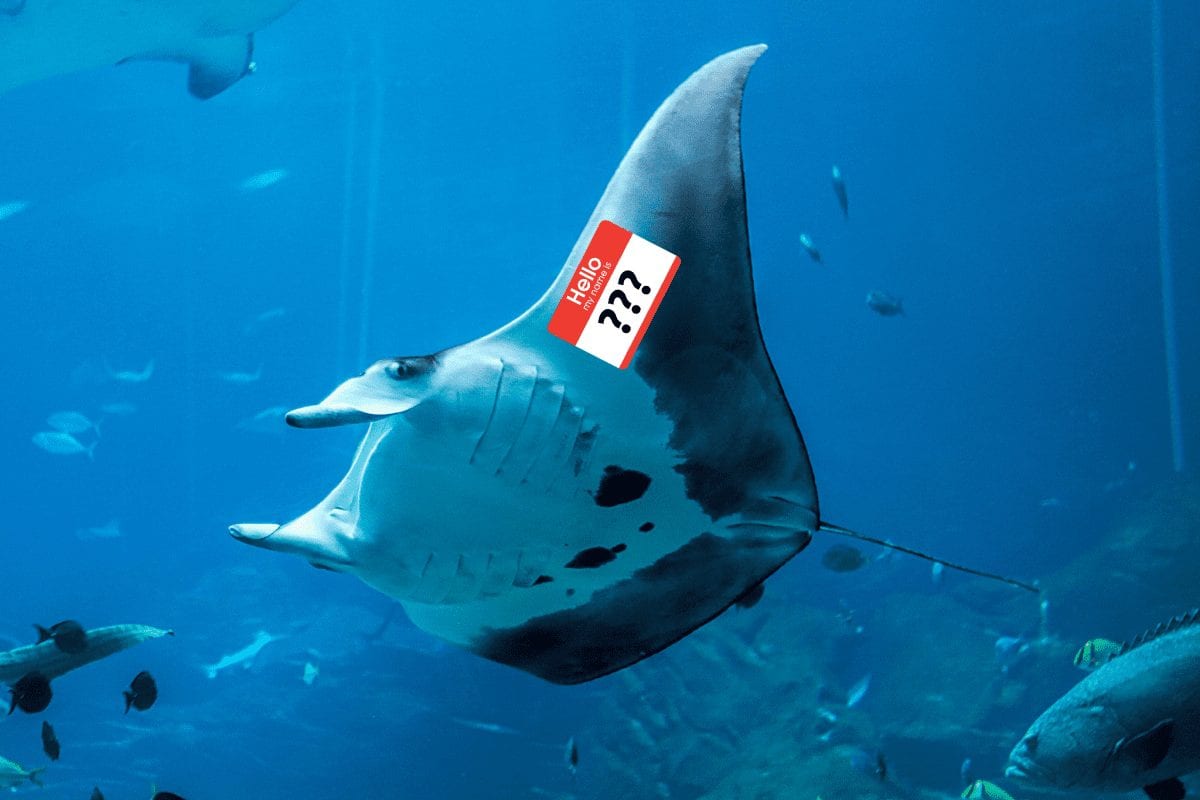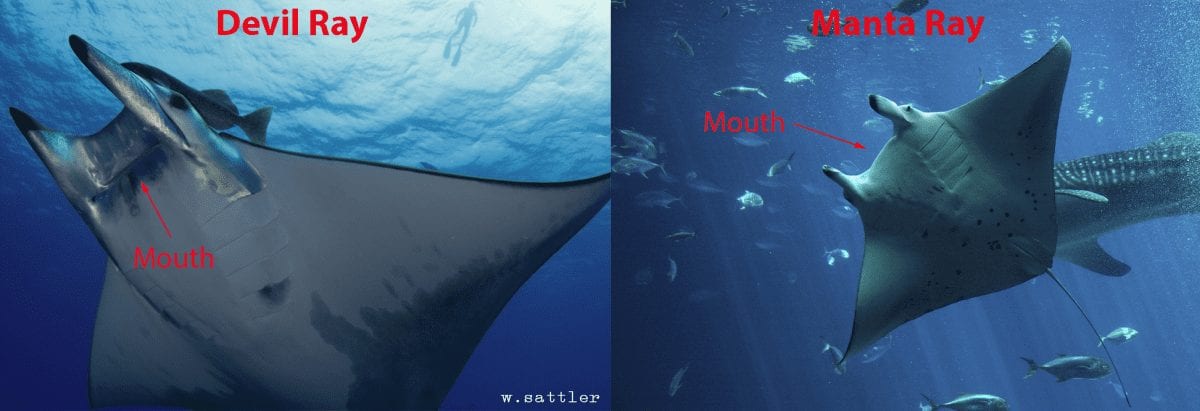June 30, 2017
Shark Fact Friday #8: Will the real mobula ray please stand up?
Welcome to Shark Fact Friday, a (mostly) weekly blog post all about unique sharks and what makes them so awesome. This week we will be featuring a close relative of the shark – the ray!
In the most upsetting scientific news since Pluto was dethroned from being considered a planet, manta rays are no longer technically called mantas.

A little background: scientific names come in two parts – the genus name followed by the species name. For example, the scientific name for humans is Homo sapiens. Homo is our genus name and sapiens is our species name. Species also have a common name since remembering a two-part Latin name is rather cumbersome. In this case, our common name is “human.”
Manta rays got their common name because their genus name is, unsurprisingly, Manta. Our favorite giant ray friends are closely related to another genus of larger than average rays called devil rays, whose genus name is Mobula. Previously, manta rays had been in a separate category from devil rays (thus the different genus names) because of the position of their mouths. Manta rays’ mouths face forward on the front of their face, while the devil rays have mouths on the bottom facing downward.

Scientist have been investigating the relationship between devil and manta rays for quite a while, however there have not been very many global-scale studies. This is in part because the largest species in this group can reach up to 23 feet wide from tip to tip (making it as wide as two stories on a building). These species are also relatively rare, so as you can probably imagine, getting scientific samples can be a challenge. However, the authors of a new paper managed to get access to DNA samples from manta and devil rays from places like South Africa, the Philippines, Indonesia, Jamaica, Cambodia and India. No small feat! With a full set of samples and advanced genetics capabilities, they compared the DNA of all these species and found that mantas actually belong in the genus Mobula with the devil rays and no longer warrant their own genus.
So what does this mean? Well, it means that manta rays are really just super big devil rays, despite the placement of their mouths, and that their new genus name is Mobula and not Manta.
Now, before things get too crazy, it should be noted that the common name of “manta rays” was retained, so people can keep calling them manta rays. But if anyone ever asks why they are called manta rays, the answer will be a lot more complicated now.
MOST RECENT
September 3, 2025
Air Raid Panic to Informed Skies and Seas: The National Weather Service in a Nutshell
August 29, 2025
August 22, 2025
Corals, Community, and Celebration: Oceana Goes to Salmonfest!



